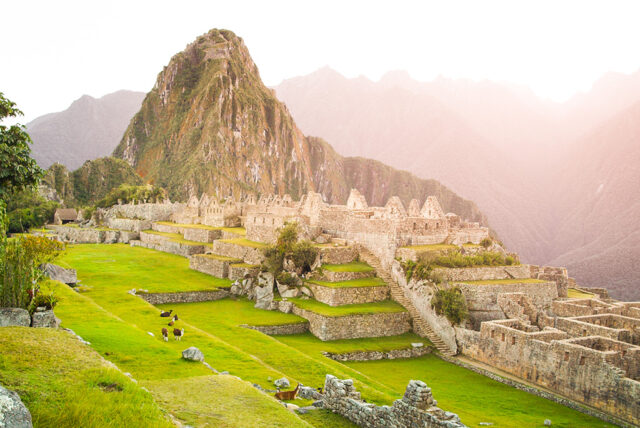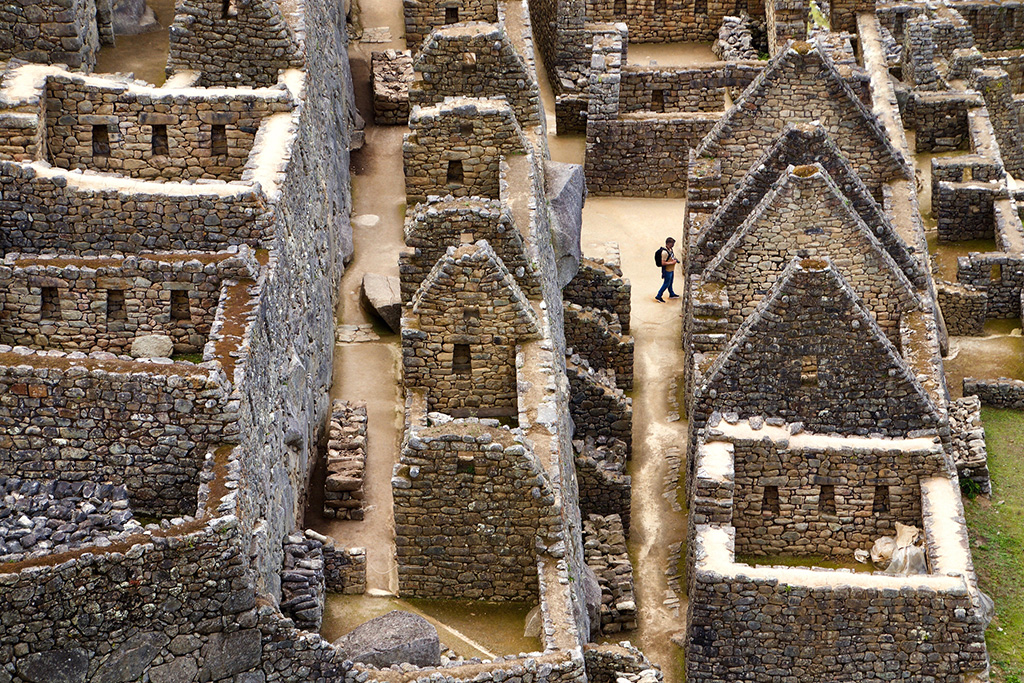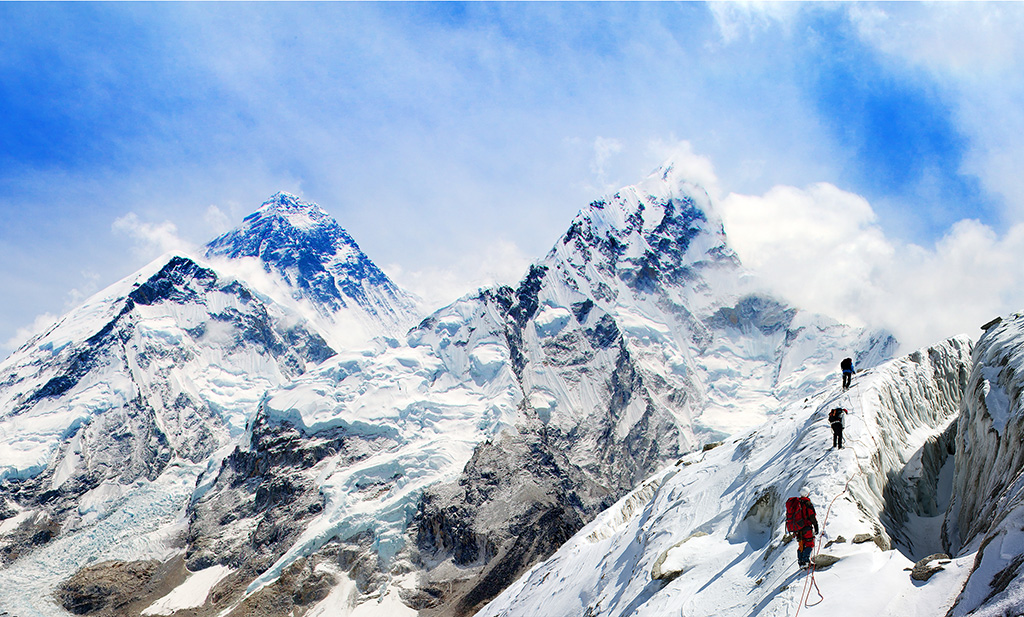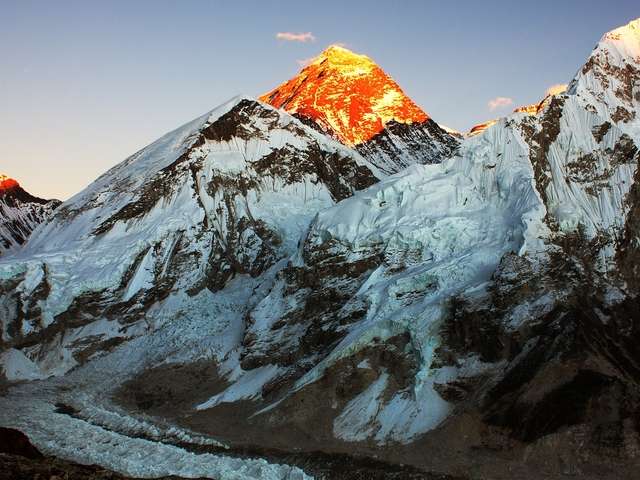
Even among non-trekkers the Everest Base Camp trek and the Inca Trail garner significant name recognition. With both trails winding through stunning mountain ranges, the Himalayas and the Andes respectively, trekking either of these pristine locations is a memorable endeavor. However, deciding between the two for your next adventure is a challenge of its own. We’ve put together an overview of the difficulty, scenery, experience, acclimatization and best times to go to help you make an informed decision.
Trekking Difficulty
Both Everest Base Camp and the Inca Trail are considered moderately difficult treks. The Everest Base Camp trek is 122km (76 miles) round trip and one gains a total elevation of 4200m/13900feet accounting for ups and downs on the trail. In comparison, the Inca trail is only 43km (26 miles) and gains 2000m/6600feet. Although Everest Base Camp is nearly three times as long, most trekking days are slightly shorter and there are two rest days built into the schedule for acclimatization. on trail. The number of days trekking and the higher altitude makes the Everest Trek the more difficult option but the Inca trail is not without its challenges. The 4 day Inca trail however starts with a steep ascent to Dead Woman’s Pass at 4,215m which is followed by several other passes and countless Incan steps. Although either trek can be intimidating both are feasible with proper training and can be achieved by those without previous trekking experience.

Scenery: Andes or Himalayas
The Inca Trail and Everest trek both offer vastly different trekking experiences. As you work your way towards Everest Base Camp the scenery is incredible and the views of the peaks are spectacular. The Everest Trek passes below the base of Ama Dablam (the Matterhorn of the Himalayas) and the trek showcases 4 of the world’s 14 eight thousand meter peaks which include; Cho Oyu, Lhotse, Makalu and of course Everest. The Inca Trail, on the other hand, passes through a combination of ancient Incan ruins and subtropical cloud forests filled with orchids and hummingbirds. The entire trek offers unforgettable views of the Andes and of course, ends with picturesque views of the sacred city, Machu Picchu itself. It’s hard to compare these vastly different yet uniquely beautiful landscapes. Neither will let you down in this department.
Trekking Experience
On the Everest trek you will be hiking through small village’s dependent on tourism for their livelihood and offering the visitors a range of restaurants, lodging options and shops selling everything from souvenirs to snacks. Tea houses usually have a shared dining room where you can enjoy the fire and a beer in the evening as you get a chance to swap stories with others on the same journey. Rooms in the tea houses are either 1 or 2 person per room and have basic bedding and lighting.The Inca Trail is on the other side of the spectrum with tent camping, 1 or 2 people per tent. However, the porters hired to set up, take down and transport the tents do the work for you. Before the next campsite is reached everything is ready for the trekkers down to the food being prepared. Dinner is eaten together in the dining tent that evening before you lay down under the blanket of Peru’s starry sky. Which is better? It comes down to personal preference deciding between the teahouse accomodation in Nepal or the open air experience of camping in Peru.

Culture Contrast
One of the highlights of trekking in the Himalayas is learning about the Sherpa culture and its ancient Buddhist roots. For centuries the Himalayas have been a spiritual refuge for those seeking enlightenment and to this day Buddhism continues to flourish throughout the region. Frequently encountered in the mountain passes of the Everest Base Camp trek are relics ranging from prayer flags and stupas to carefully inscribed mani stones and impressive monasteries. The famous Tengboche Monastery, with its colorful festival Mani Rimdu complete with ritual dances and traditional song, is a destination in itself. Experiencing the sacred Himalayas through the lens of the local culture is an eye opening experience to say the least.
As one of the wonders of the world, it’s not surprising that Machu Picchu is often hailed at the crowning accomplishment of the thriving Incan Empire both spiritually and culturally. The 15th century site stretches for 5 miles, composed of 3,000 man made steps and 150 buildings. Made more impressive by the fact that the stones aren’t held together with mortar, instead cut with technical precision still visible today. Additionally, the irrigation system and Temple of the Sun further distinguish Machu Picchu as an incredible feat of architecture and engineering. The majesty of this mountain top citadel surrounded by lush green terraces is undeniable. It would be impossible to choose between the Himalayas or Machu Picchu as far as which has more cultural value.
Acclimatization
At their highest points, Everest Base Camp at 5,380 m (17,700 ft) and Dead Woman’s Pass 4,215m (13,828 ft) both require sufficient time for acclimatization. The main difference is that the trek to Everest Base Camp gives you sufficient time to acclimatize on the trail while the Inca Trail requires you to acclimate in Cusco 3400m (11,152 ft) or the Sacred Valley 3000m (9383 ft) for a few days before you can begin the trek.
As it’s impossible to train for altitude, bring diamox, drink plenty of water and make sure to take the appropriate measures to ensure your safety.
Both treks can be a challenge when it comes to acclimatization, but with two nights above 5000 meters the Everest Trek is more difficult in this aspect. Our schedule does allow extra time for acclimatization and most trekkers don’t have problems. However, if you have had issues with altitude before the Inca Trail is probable the better option.

When To Go
Everest Base Camp can be trekked anytime from October until June. The Everest Trek can be quite cold during December and January but it is one of my favorite times of year as the crowds are completely absent and you have the mountain to yourself. Unlike Everest Base Camp, you need a permit to hike the Inca Trail (included in our package costs). During high season, from April to August the permits sell out quickly due to the warm weather and limited availability so it is wise to book in advance. It is possible to hike as late into the season as November before the rainy season is in full swing but the weather will be far more unpredictable due to the high altitudes.
Side-by-side Comparison
Number of Climbers: 500 per day
Number of Trekkers : 45,000 Everest Base Camp per year
Number of Days to Everest Base Camp: 10 Days
Number of Days to Machu Picchu: 4 Days
One Way Elevation Gain EBC: 4200m / 13900feet
One Way Elevation Gain Inca Trail: 2000m / 6600feet
Classic Inca Trail Round Trip Distance: 43km (26 miles)
Everest Base Camp Round Trip Distance: 122km (76 miles)
Cost of 14 Day Everest Trip: $1399
Cost of 4 Day Inca Trail: $679
You can check both of the packages online here for additional details and common questions.
14 Day Everest Base Camp Trek
4 Day Inca Trail Trek
Some additional reading of interest are the following blog posts:
34 Tips to Get You to Everest Base Camp
8 Tips for hiking the Inca Trail
If you have any questions please feel free to contact us or submit an inquiry.

















